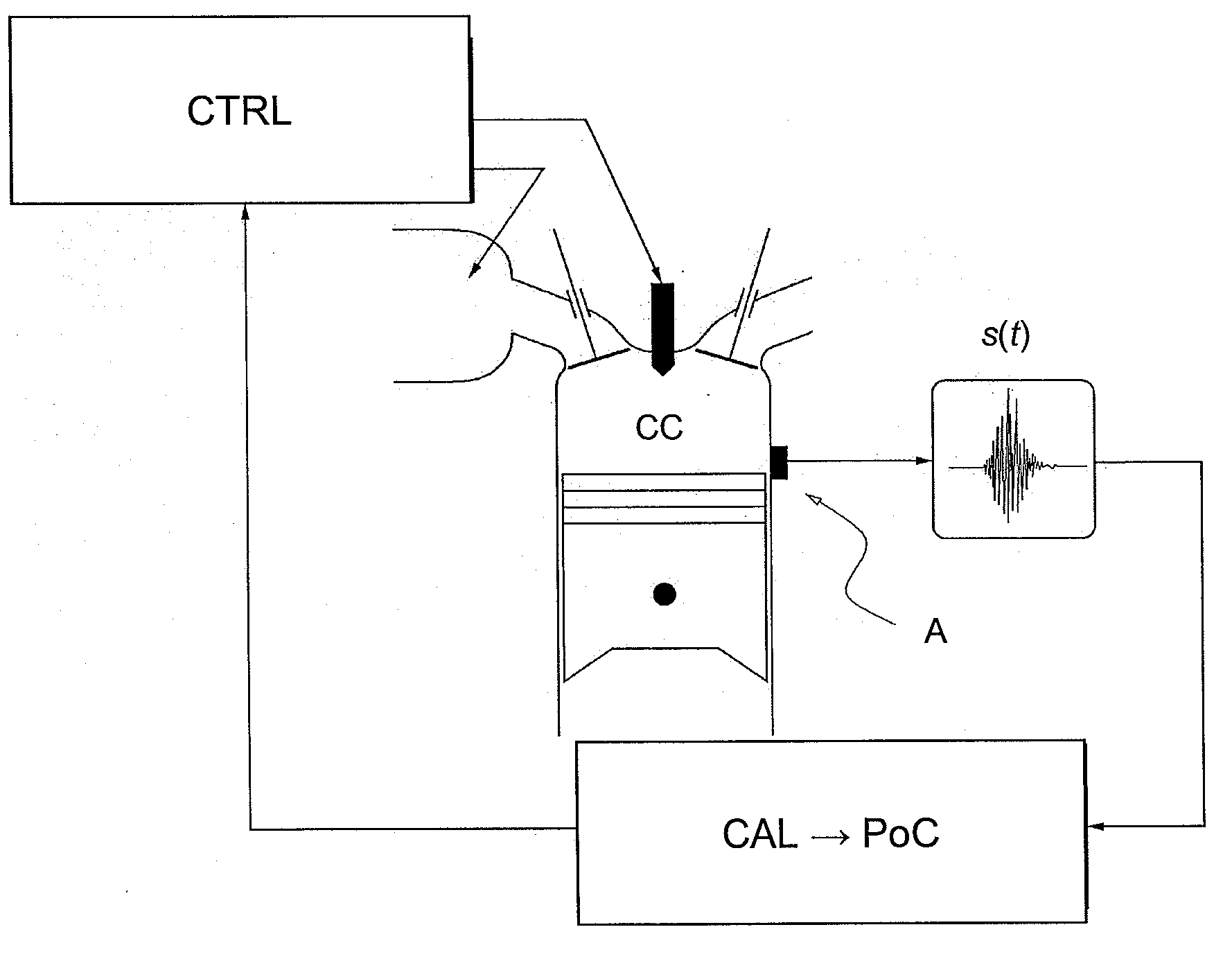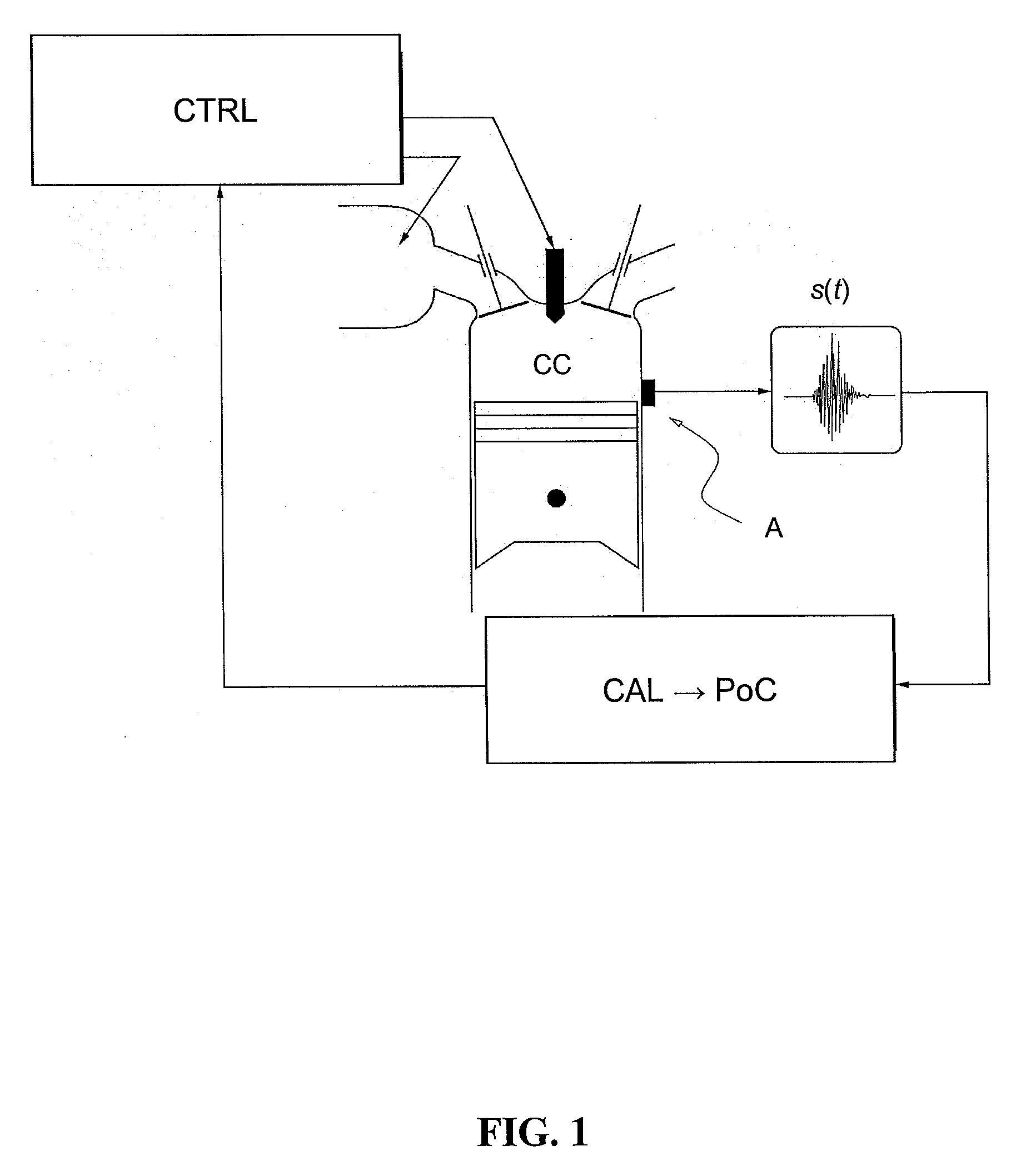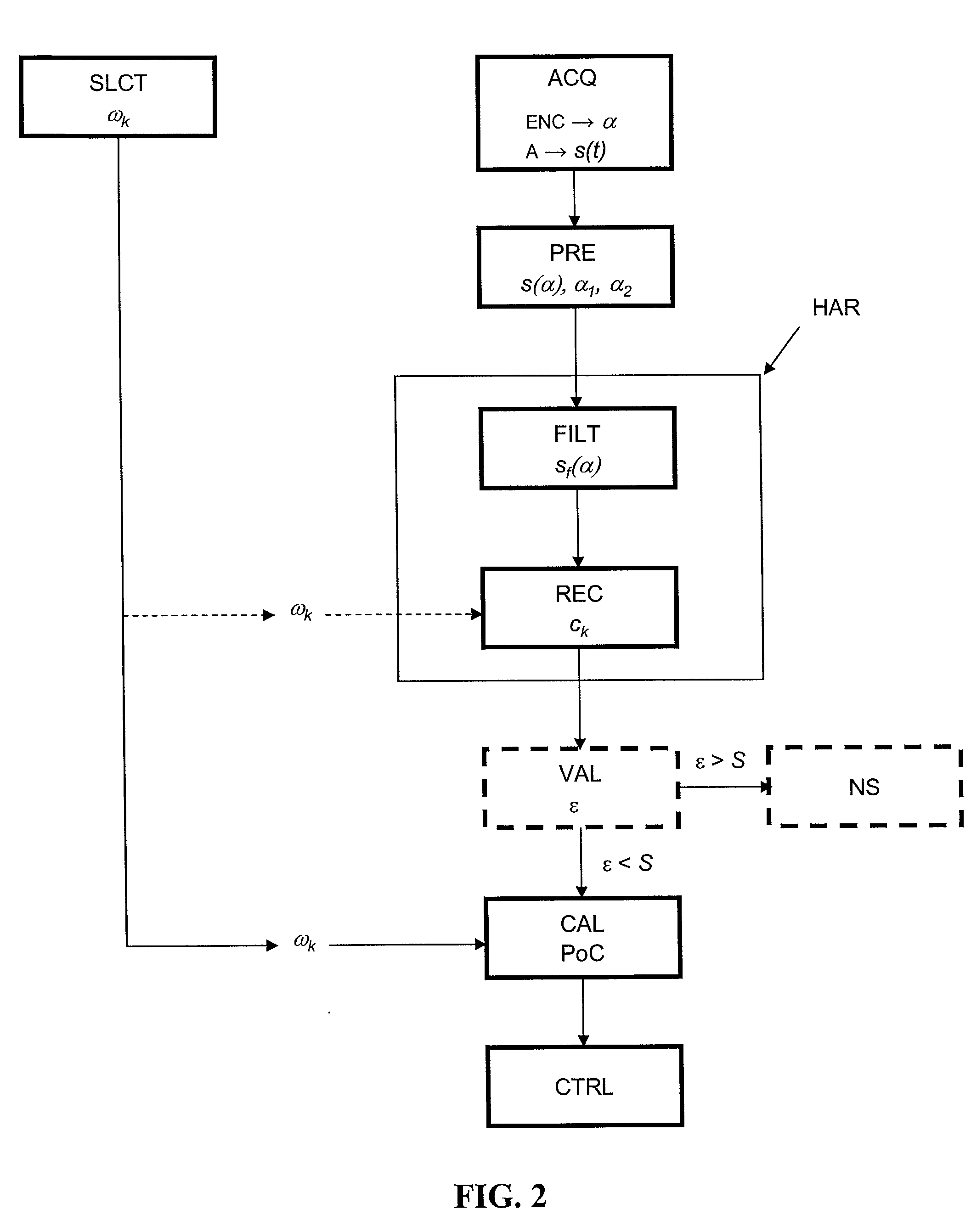Method for Real-Time Estimation of Engine Combustion Parameters from Vibratory Signals
a technology of vibratory signals and engine combustion parameters, which is applied in the direction of machines/engines, electric control, instruments, etc., can solve the problems of inability to be standardized in vehicles, the engine has become an assembly of complex systems, and the extraction of coherent combustion parameters from an accelerometer is difficul
- Summary
- Abstract
- Description
- Claims
- Application Information
AI Technical Summary
Benefits of technology
Problems solved by technology
Method used
Image
Examples
application example
[0145]The performances of the invention are illustrated through an application to a diesel engine operating in HCCI mode. For didactic reasons, the example focuses on a single cylinder, but the method can be readily generalized to multicylinder engines. The goal of this example is to show the pertinence of parameters PoC from the Fourier observer by comparing them with parameters obtained from the analysis of the cylinder pressure signal. The control of the mass injected during the pilot injection is also presented and the goal of this strategy is to reduce the noise level of the engine.
[0146]Observer Calibration
[0147]Table 1, where Ncyl represents the number of cylinders of the engine, shows the values of the parameters required for calibration of the Fourier observer.
TABLE 1Summary of the adjustment parameters suited to the test engineParameterUnitDescriptionValue1degreelower boundary of the angular−20window2degreeupper boundary of the angular50windowF1Hertzlower cut-off frequency...
PUM
 Login to View More
Login to View More Abstract
Description
Claims
Application Information
 Login to View More
Login to View More - R&D
- Intellectual Property
- Life Sciences
- Materials
- Tech Scout
- Unparalleled Data Quality
- Higher Quality Content
- 60% Fewer Hallucinations
Browse by: Latest US Patents, China's latest patents, Technical Efficacy Thesaurus, Application Domain, Technology Topic, Popular Technical Reports.
© 2025 PatSnap. All rights reserved.Legal|Privacy policy|Modern Slavery Act Transparency Statement|Sitemap|About US| Contact US: help@patsnap.com



